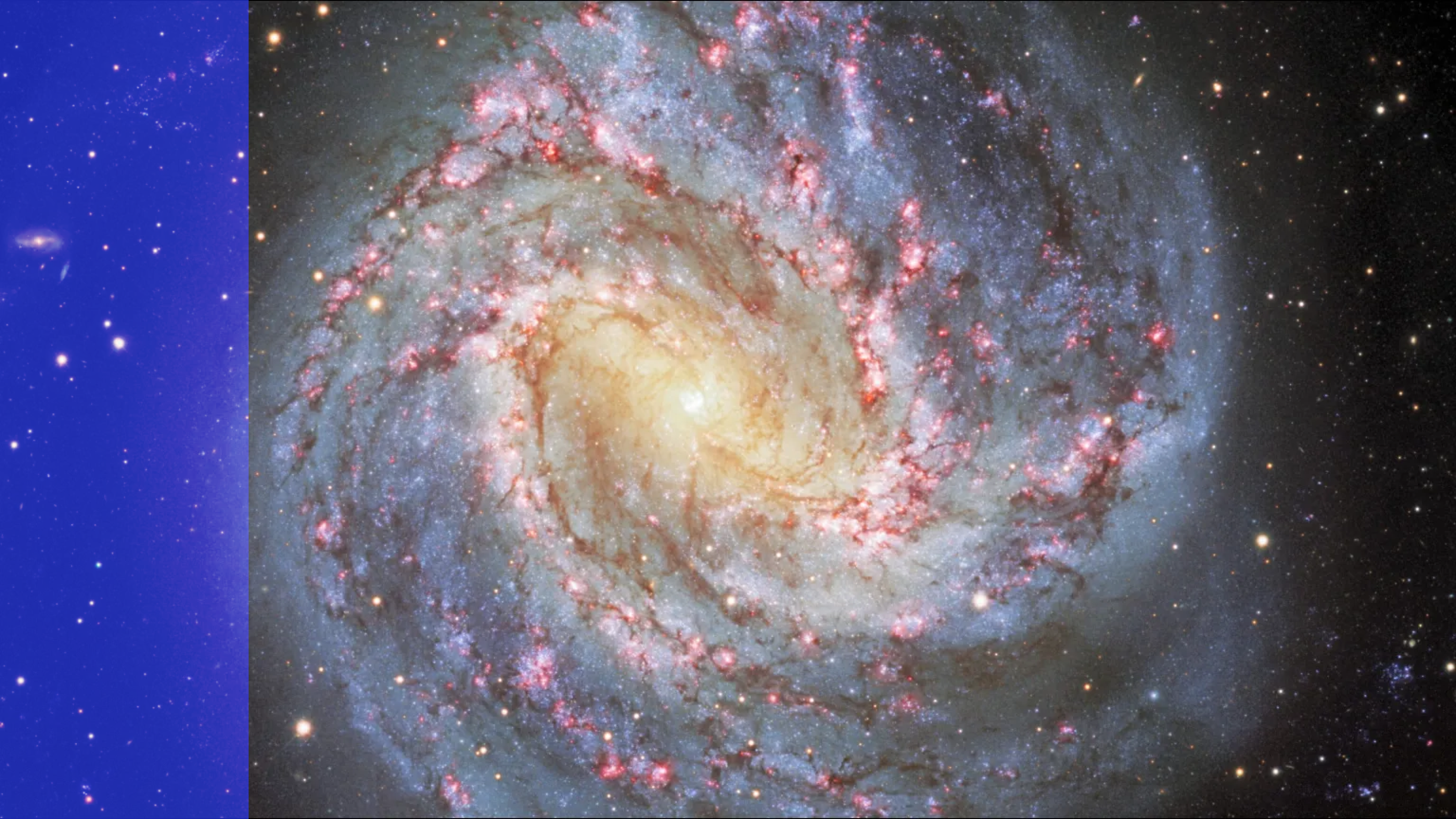Only Dark Matter (And Not Modified Gravity) Can Explain The Universe
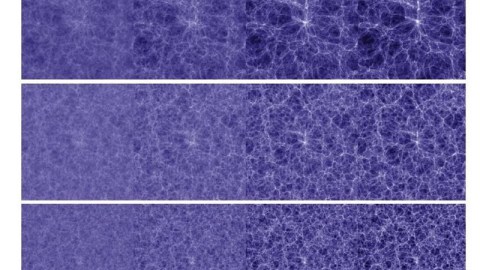
There have been a lot of public advocates from the “no dark matter” camp, getting lots of popular attention. But the Universe still needs dark matter. Here’s why.
If you took a look at all the galaxies in the Universe, measured where all the matter you could detect was, and then mapped out how these galaxies were moving, you’d find yourself quite puzzled. Whereas in the Solar System, the planets orbit the Sun with decreasing speed the farther away from the center you go — just as the law of gravitation predicts — the stars around the galactic center do no such thing. Even though the mass is concentrated towards the central bulge and in a plane-like disk, the stars in the outer regions of a galaxy whip around it at the same speeds as they do in the inner regions, defying predictions. Obviously, something is missing. Two solutions spring to mind: either there’s some type of unseen mass out there making up the deficit, or we need to modify the laws of gravity, as we did when we leapt from Newton to Einstein. While both of these possibilities seem reasonable, the unseen mass explanation, known as dark matter, is far and away the superior option. Here’s why.
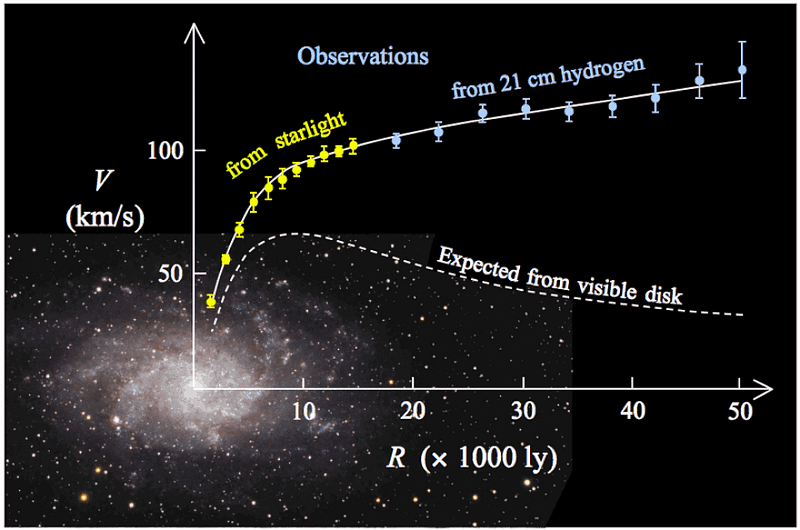
First off, the answer has nothing to do with individual galaxies. Galaxies are some of the messiest objects in the known Universe, and when you’re testing the very nature of the Universe itself, you want the cleanest environment possible. There’s an entire field of study devoted to this, known as physical cosmology. (Full disclosure: it’s my field.) When the Universe was first born, it was very close to uniform: almost exactly the same density everywhere. It’s estimated that the densest region the Universe began with was less than 0.01% denser than the least dense region at the start of the hot Big Bang. Gravitation works very simply and in a very straightforward fashion, even on a cosmic scale, when we’re dealing with small departures from the average density. This is known as the linear regime, and provides a great cosmic test of both gravitation and dark matter.
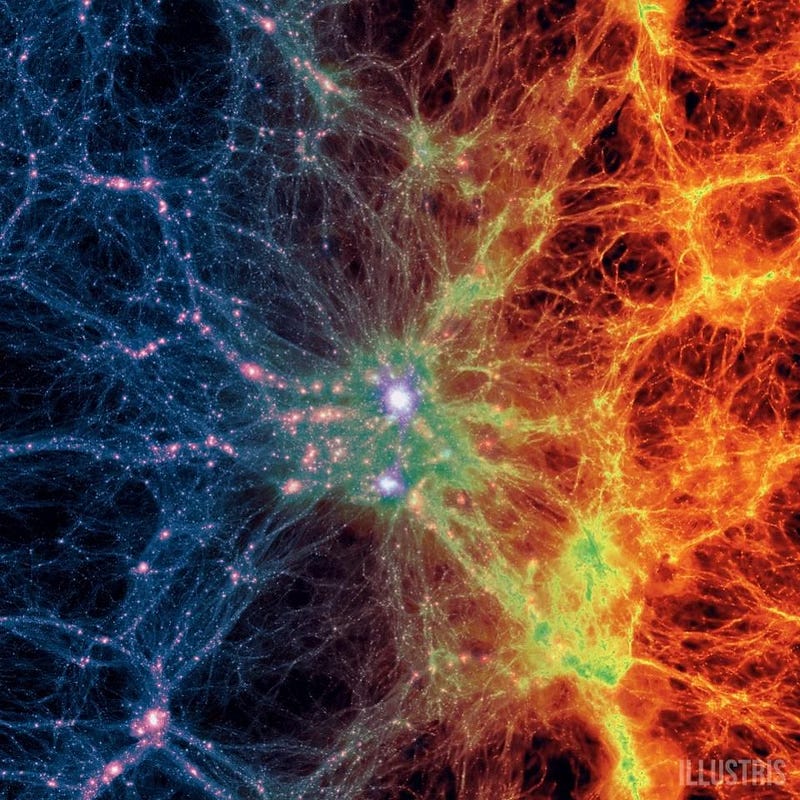
On the other hand, when we’re dealing with large departures from the average, this places you into what’s called the non-linear regime, and these tests are far more difficult to draw conclusions from. Today, a galaxy like the Milky Way may be be a million times denser than the average cosmic density, which places it firmly in the non-linear regime. On the other hand, if we look at the Universe on either very large scales or at very early times, the gravitational effects are much more linear, making this your ideal laboratory. If you want to probe whether modifying gravity or adding the extra ingredient of dark matter is the way to go, you’ll want to look where the effects are clearest, and that’s where the gravitational effects are most easily predicted: in the linear regime.
Here are the best ways to probe the Universe in that era, and what they tell you.
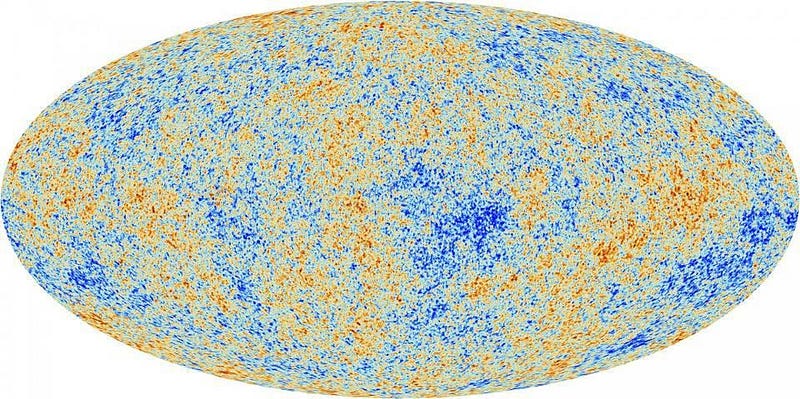
1.) The fluctuations in the Cosmic Microwave Background. This is our earliest true picture of the Universe, and the fluctuations in the energy density at a time just 380,000 years after the Big Bang. The blue regions correspond to overdensities, where matter clumps have begun their inevitable gravitational growth, heading down their path to form stars, galaxies, and galaxy clusters. The red regions are underdense regions, where matter is being lost to the denser regions surrounding it. By looking at these temperature fluctuations and how they correlate — which is to say, on a specific scale. what’s the magnitude of your average fluctuation away from the mean temperature — you can learn an awful lot about the composition of your Universe.
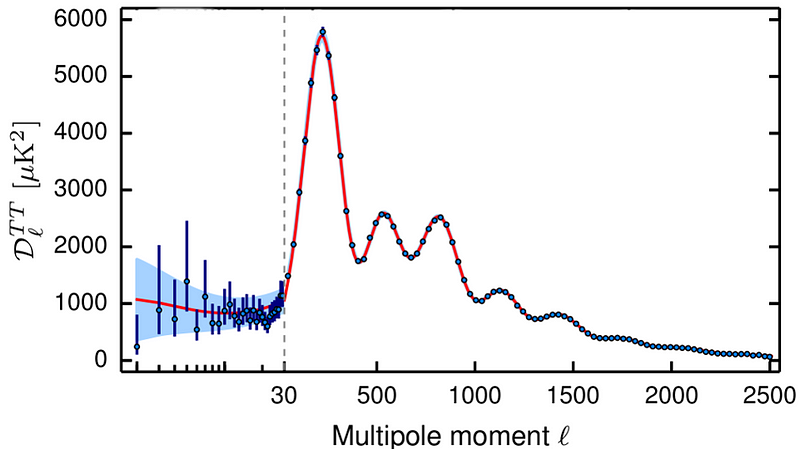
In particular, the positions and heights (especially the relative heights) of the seven peaks identified above agree spectacularly with a particular fit: a Universe that’s 68% dark energy, 27% dark matter, and 5% normal matter. If you don’t include dark matter, the relative sizes of the odd-numbered peaks and the even-numbered peaks cannot be made to match up. The best that modified gravity claims can do are to either get you the first two peaks (but not the third or beyond), or to get you the right spectrum of peaks by also adding some dark matter, which defeats the whole purpose. There are no known modifications to Einstein’s gravity that can reproduce these predictions, even after-the-fact, without also adding dark matter.
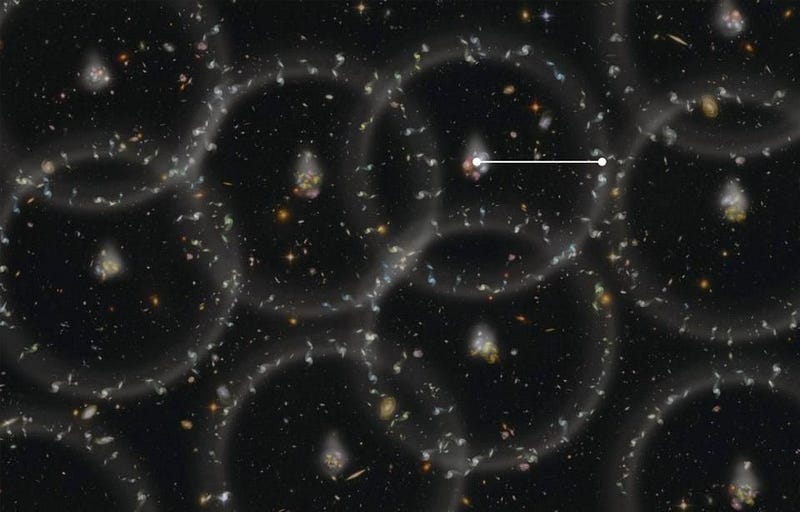
2.) The large-scale structure in the Universe. If you have a galaxy, how likely are you to find another galaxy a certain distance away? And if you look at the Universe on a certain volumetric scale, what departures from the “average” numbers of galaxies do you expect to see there? These questions are at the heart of understanding large-scale structure, and their answers depend very strongly on both the laws of gravity and what’s in your Universe. In a Universe where 100% of your matter is normal matter, you’ll have big suppressions of structure formation on specific, large scales, while if your Universe is dominated by dark matter, you’ll get only small suppressions superimposed on a smooth background. You don’t need any simulations or nonlinear effects to probe this; this can all be calculated by hand.
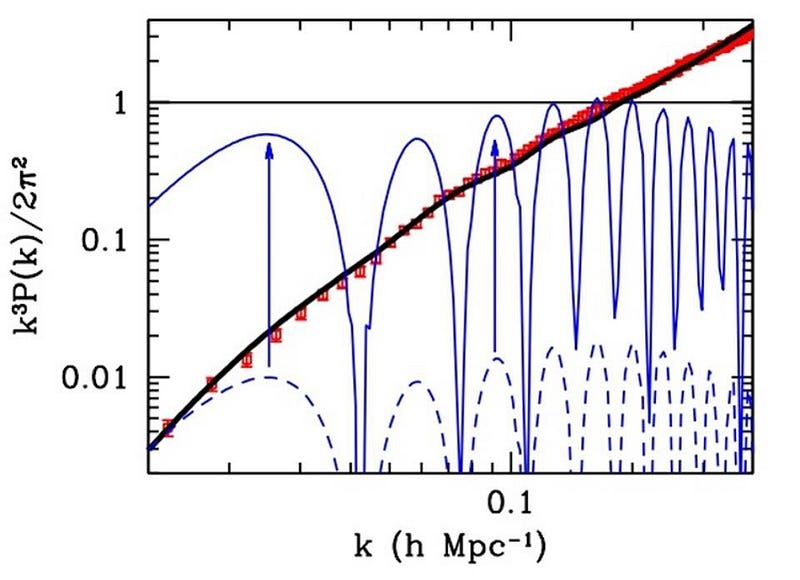
When we look out at the Universe on these largest scales, and compare with the predictions of these different scenarios, the results are incontrovertible. Those red points (with error bars, as shown) are the observations — the data — from our own Universe. The black line is the prediction of our standard ΛCDM cosmology, with normal matter, dark matter (in six times the amount of normal matter), dark energy, and general relativity as the law governing it. Note the small wiggles in it and how well — how amazingly well — the predictions match up to the data. The blue lines are the predictions of normal matter with no dark matter, in both standard (solid) and modified gravity (dotted) scenarios. And again, there are no modifications to gravity that are known that can reproduce these results, even after-the-fact, without also including dark matter.
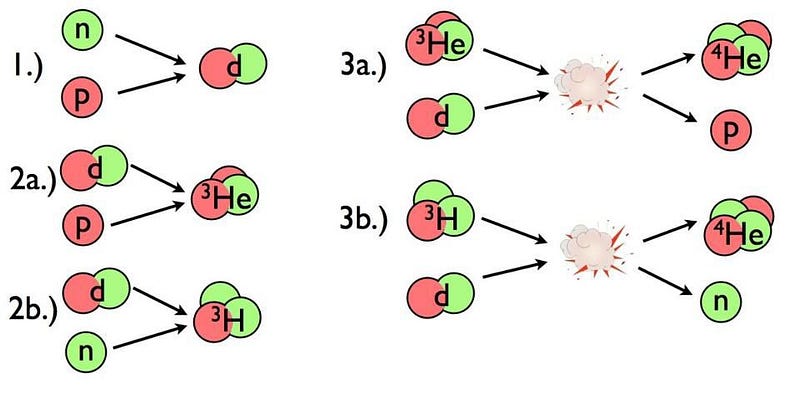
3.) The relative abundance of light elements formed in the early Universe. This isn’t specifically a dark matter-related question, nor is it extremely dependent on gravity. But due to the physics of the early Universe, where atomic nuclei are blasted apart under high-enough energy conditions when the Universe is extremely uniform, we can predict exactly how much hydrogen, deuterium, helium-3, helium-4, and lithium-7 should be left over from the Big Bang in the primordial gas we see today. There’s only one parameter that all of these results depend on: the ratio of photons to baryons (protons and neutrons combined) in the Universe. We’ve measured the number of photons in the Universe thanks to both the WMAP and Planck satellites, and we’ve also measured the abundances of those elements.
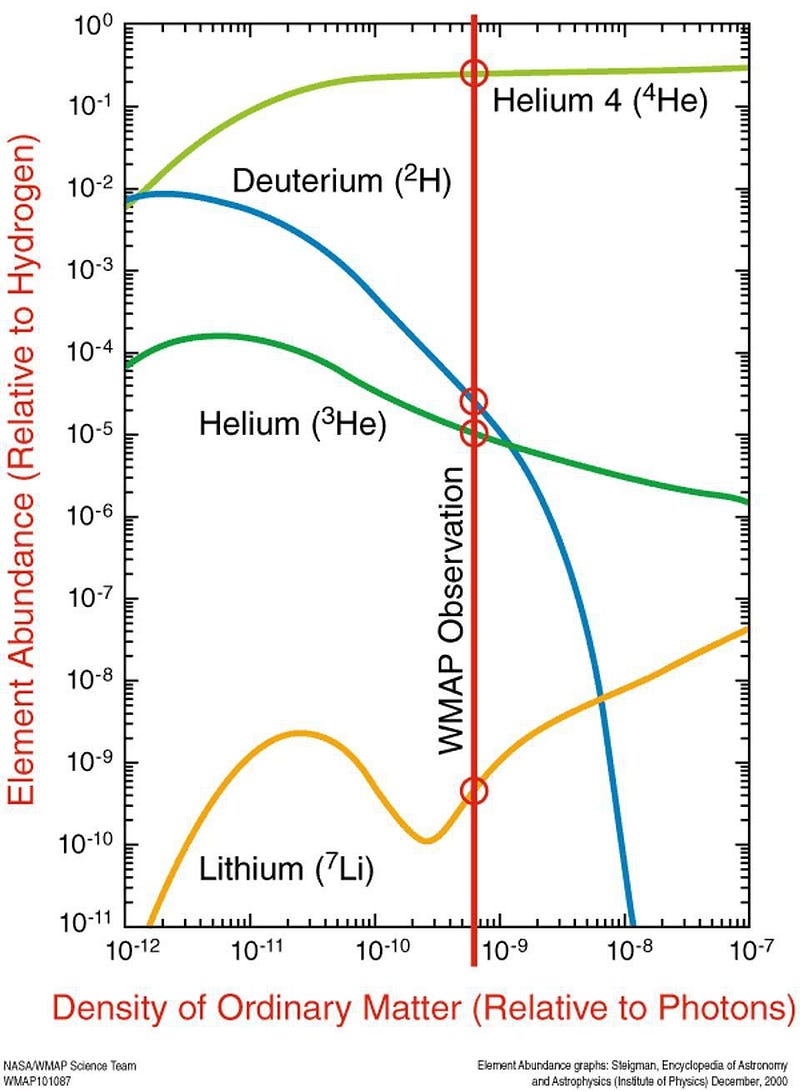
Putting that together, they tell us the total amount of normal matter in the Universe: it’s 4.9% of the critical density. In other words, we know the total amount of normal matter in the Universe. Its a number that’s in spectacular agreement with both the cosmic microwave background data and the large-scale structure data, and yet, it’s only about 15% of the total amount of matter that has to be present. There is, again, no known modification of gravity that can give you those large-scale predictions and also give you this low abundance of normal matter.

4.) The gravitational bending of starlight from large cluster masses in the Universe. When we look at the largest clumps of mass in the Universe, the ones that are closest to still being in the linear regime of structure formation, we notice that the background light from them is distorted. This is due to the gravitational bending of starlight in relativity known as gravitational lensing. When we use these observations to determine what the total amount of mass present in the Universe is, we get that same number we’ve gotten all along: about 30% of the Universe’s total energy must be present in all forms of matter, added together, to reproduce these results. With only 4.9% present in normal matter, this implies there must be some sort of dark matter present.
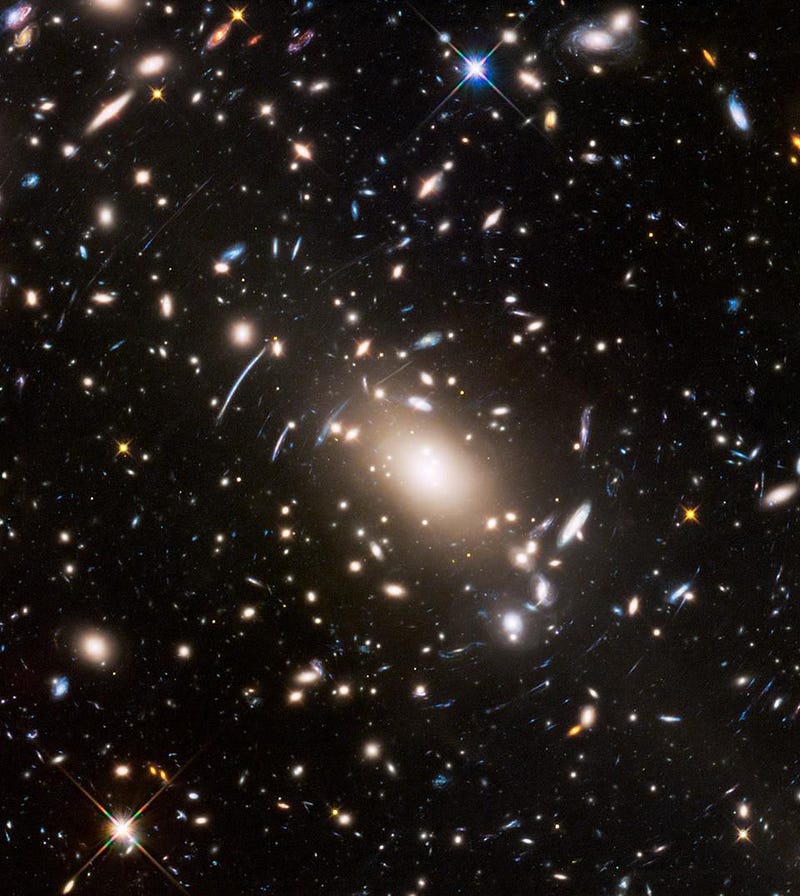
When you look at the full suite of data, rather than just some small details of what goes on in the messy, complex, nonlinear regime, there’s no way to obtain the Universe we have today without adding in dark matter. People who use Occam’s Razor (incorrectly) to argue in favor of MOND, or MOdified Newtonian Dynamics, need to consider that modifying Newton’s law will not solve these problems for you. If you use Newton, you miss out on the successes of Einstein’s relativity, which are too numerous to list here. There’s the Shapiro time delay. There’s gravitational time dilation and gravitational redshift. There’s the framework of the Big Bang and the concept of the expanding Universe. There’s the Lens-Thirring effect. There are the direct detections of gravitational waves, with their measured speed equal to the speed of light. And there are the motions of galaxies within clusters and of the clustering of galaxies themselves on the largest scales.
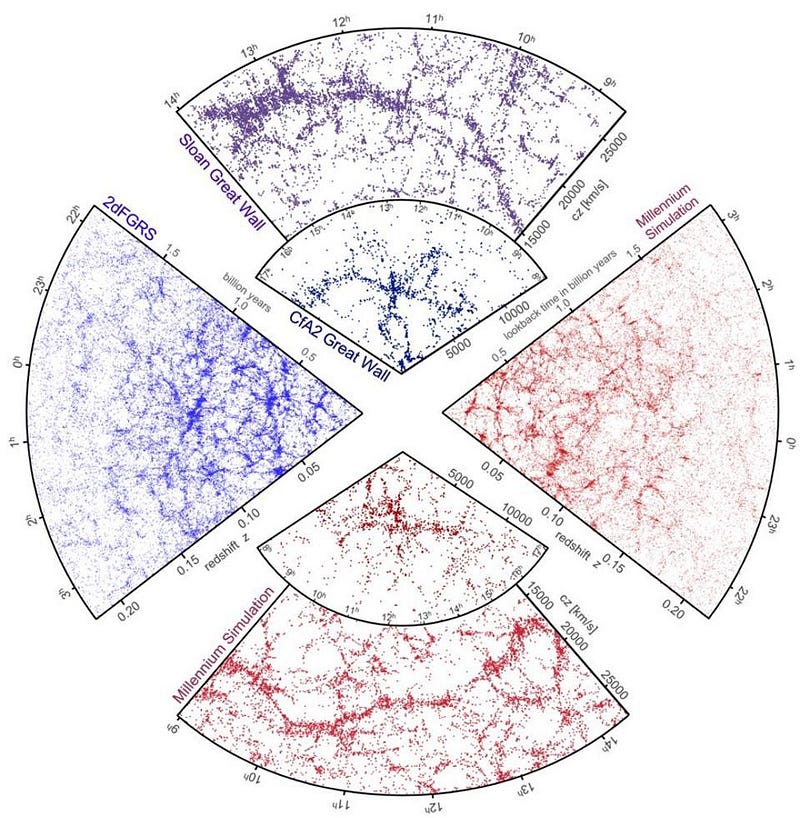
And for all of these observations, there is no single modification of gravity that can reproduce these successes. There are a few vocal individuals in the public sphere who advocate for MOND (or other modified gravity incarnations) as a legitimate alternative to dark matter, but it simply isn’t one at this point. The cosmology community isn’t dogmatic at all about the need for dark matter; we “believe in” it because all of these observations demand it. Yet despite all the efforts going into modifying relativity, there are no known modifications that can explain even two of these four points, much less all four. But dark matter can, and does.
Just because dark matter appears to be a fudge factor to some, compared to the idea of modifying Einstein’s gravity, doesn’t give the latter any additional weight. As Umberto Eco wrote in Foucault’s Pendulum, “As the man said, for every complex problem there’s a simple solution, and it’s wrong.” If someone tries to sell you modified gravity, ask them about the cosmic microwave background. Ask them about large-scale structure. Ask them about Big Bang Nucleosynthesis and the full suite of other cosmological observations. Until they have a robust answer that’s as good as dark matter’s, don’t let yourself be satisfied.
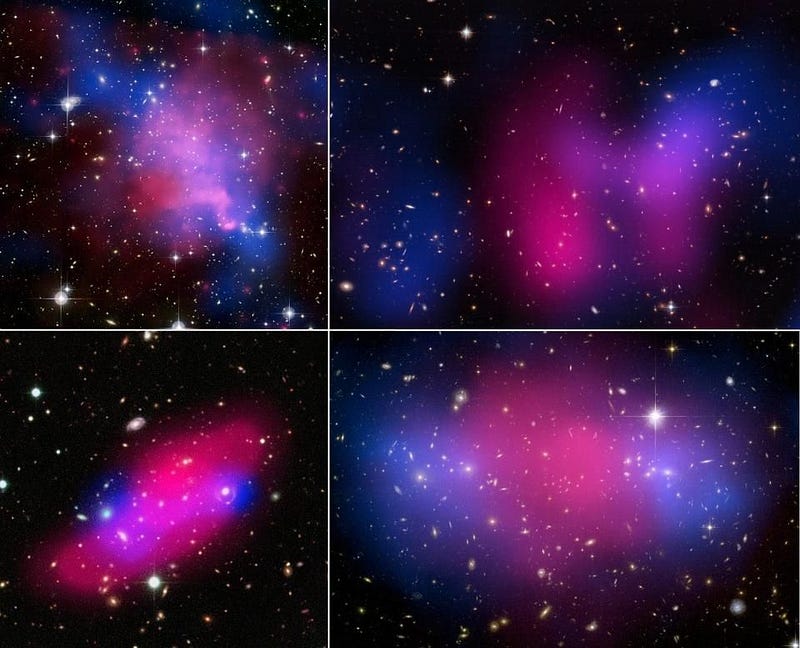
Modified gravity cannot successfully predict the large-scale structure of the Universe the way that a Universe full of dark matter can. Period. And until it can, it’s not worth paying any mind to as a serious competitor. You cannot ignore physical cosmology in your attempts to decipher the cosmos, and the predictions of large-scale structure, the microwave background, the light elements, and the bending of starlight are some of the most basic and important predictions that come out of physical cosmology. MOND does have a big victory over dark matter: it explains the rotation curves of galaxies better than dark matter ever has, including all the way up to the present day. But it is not yet a physical theory, and it is not consistent with the full suite of observations we have at our disposal. Until that day comes, dark matter will deservedly be the leading theory of what makes up the mass in our Universe.
Ethan Siegel is the author of Beyond the Galaxy and Treknology. You can pre-order his third book, currently in development: the Encyclopaedia Cosmologica.




